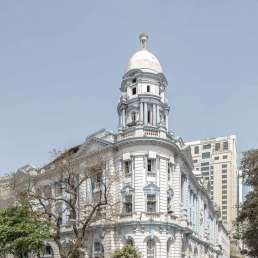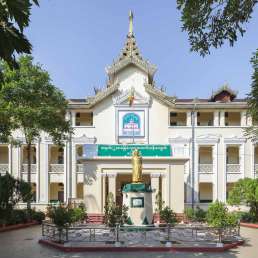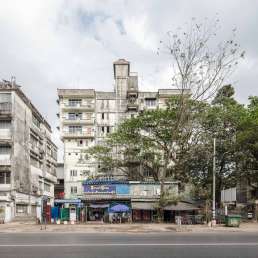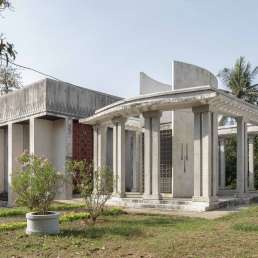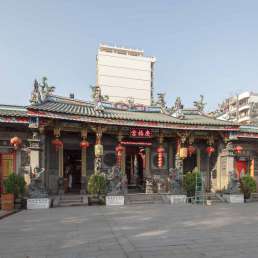Formerly: Scott's Market
Address: Bogyoke Road
Year built: 1926
Architect: Unknown
Bogyoke Aung San Market, seen here from the west with a view towards the FMI Centre, is one of Yangon’s main tourist attractions. It was built by the British and takes its name from the Municipal Commissioner of the time, Gavin C Scott. (It’s common to read sources stating—incorrectly—that the market was named after James George Scott, a journalist who wrote Burma: A Handbook of Practical Information in 1906. Allegedly, this Scott also introduced the Burmese to football.) It was renamed after Burma’s great independence leader in 1948.
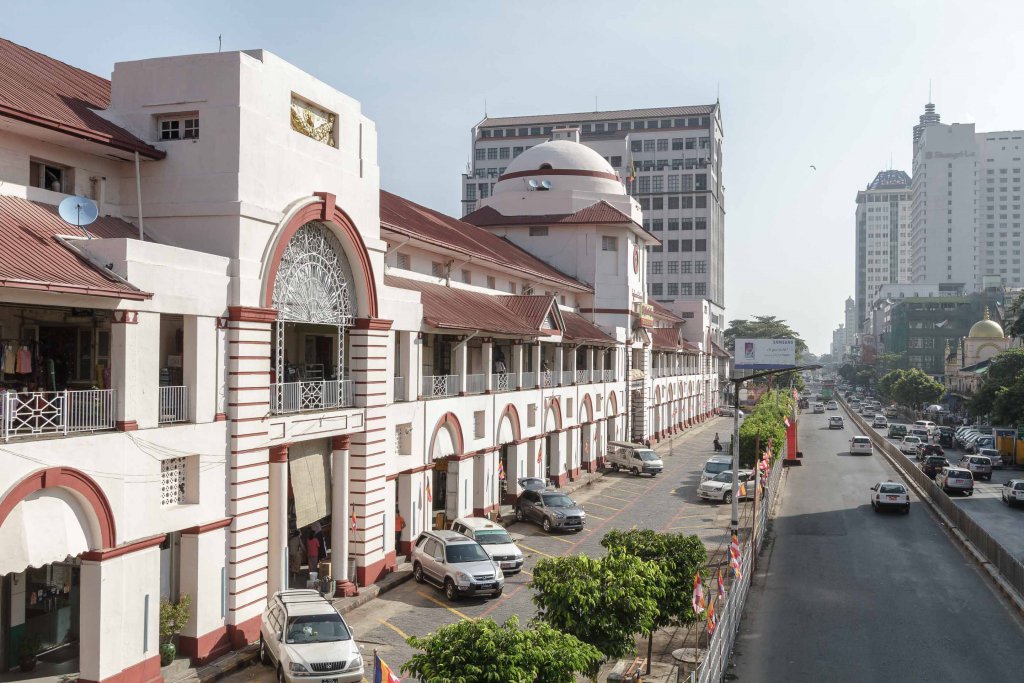
The market sells gems, local art, western clothes, longyi and cloth from Myanmar’s ethnic minority states. It features antiques of diverse periods, quality and authenticity, including furniture, vintage glasses, old coins and postage stamps. It also caters to tourists’ more immediate needs, such as traditional and plastic sandals and a range of cheap t-shirts. (It’s worth noting those depicting Aung San Suu Kyi, or in some way related to the NLD—an unfathomable thing to sell before 2011.) It was also a popular place for visitors to exchange US dollars on the black market at advantageous rates. Money changers still loiter on the market’s edges.
The market divides itself into various sections, 21 in total. It is roughly organised according to product, with the gem and jewellery section occupying the western wings. Jade is on offer everywhere. Proceed with caution, though: some is unlikely to be authentic. And a much bigger problem is the conditions under which jade is mined in Myanmar. Quarries are mostly in hard-to-reach, northern stretches of the country, inaccessible to the international community and not conforming to ethical mining standards. According to investigations, many of the trade’s key players also have close interests in the country’s vast drug trafficking networks. In 2014, Al Jazeera reported the official revenue from jade exports to be 1.3 billion US dollars, while an independent study from Harvard University placed the real amount, on the black market, at 8 billion US dollars.
Bogyoke Market is set back and separated from the street by a fence and a narrow parking lot. When the market is closed, the fence forces pedestrians to walk along busy Bogyoke Road. All the buildings possess an arcade in front of the shops protecting them from the sun. The main hall features a high arched ceiling and contains numerous small shop booths.
The main hall, which faces Bogyoke Road, has undergone a recent paint job. Notable features include the dome, first-floor loggias and the recurring ornate iron arches running along the façade.
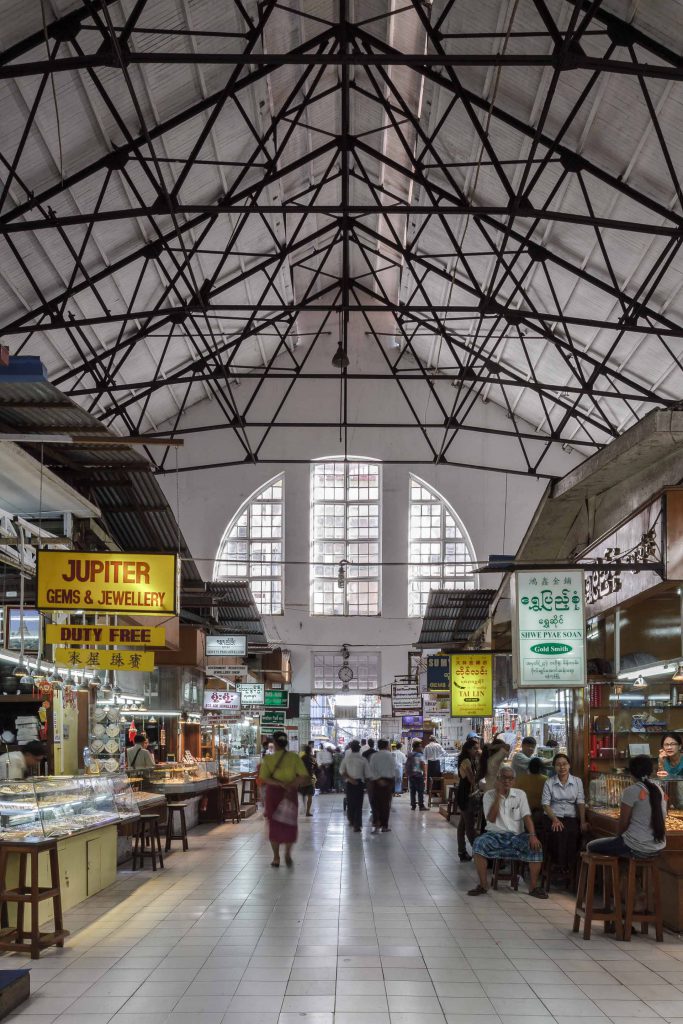
As you progress deeper into the market, the original colonial-era features disappear and you discover that most of the market’s extensions are made of corrugated iron painted a bright green—and as you go deeper still, the green gives way to rusting iron sheets draped in blue tarpaulin. It’s worth noting, however, that while these extensions are clearly intended to be cheap, light and basic, an effort was made to imitate those smaller iron arches that recur on the street-facing façade.
Unusually for Yangon, the inner streets of the market are cobbled. The street on the easternmost edge of the market, alongside Parkson Department Store, feature some attractive examples of what the original structures inside the market probably used to look like, before the days of corrugated iron.
